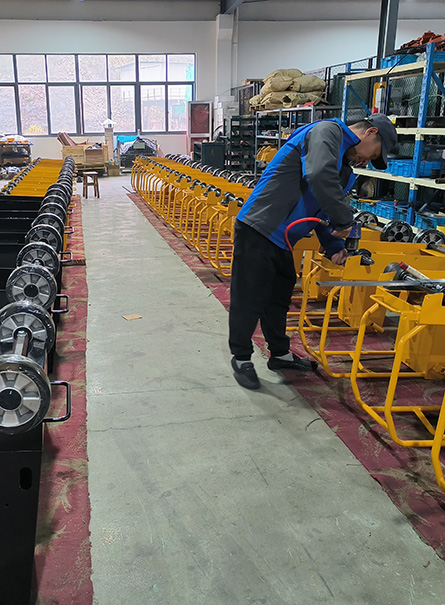Using a plate compactor can significantly speed up and simplify the compaction process, a crucial step in ensuring excellent results for projects like pathways, paving, driveways, and landscaping. For those in landscaping, road construction, or involved in trenching, understanding how to effectively utilize a plate compactor is key. This guide will delve into the workings of plate compactors, how to pick the right one for your project, and provide top tips for optimal use.
Applications of Plate Compactors
Plate compactors are versatile tools suitable for various ground materials, which generally fall into two categories:
- Granular Surfaces:
Composed of gravel and sand with a coarse texture, granular ground lets moisture drain easily. This type of ground is compacted best using the vibration from plate compactors.
- Cohesive Surfaces:
Made from silt and clay, cohesive ground has a smoother texture. It's sticky when wet but hard when dry and is effectively compacted using the force from rammers.
Common Uses for Plate Compactors and Tamping Rammers:
- Soil and Sand: Plate compactors are ideal for compacting granular materials, including granular soils. However, for cohesive soils like silt and clay, vibrating rammers are more effective. They’re excellent for landscaping tasks like preparing soil for a new lawn or creating a level base for outdoor pavers.
- Bitumen & Road Base: These materials are compacted to create even and firm grounds for roads or to compact the ground after trenching work.
- Gravel and Stone Fill: Compacting gravel for driveways or entertainment areas minimizes movement, keeping areas tidy and safe. Smaller plate compactor models are also suitable for paths.
Understanding the nature of the ground material and the specific requirements of your project is essential in choosing the right compactor. Proper use of a plate compactor not only saves time and money but also ensures the longevity and safety of the finished project.
Understanding the Varieties of Plate Compactors
Plate compactors are designed in different styles, each tailored for specific types of jobs and ground conditions. Selecting an appropriate model is essential for achieving efficient and optimal compaction results.
- Directional Operation: These compactors are designed to move forward only, as they lack the capability to reverse, unlike their reversible counterparts.
- Best for Small-scale Jobs: Ideal for smaller scale tasks such as landscaping or pathway construction, where the need for reversing is minimal.
- Space for Maneuvering: It's important to ensure there's adequate room to pivot the compactor at the end of a run, as reversing is not an option.
- Lightweight Design: These models are generally lighter, making them more manageable to transport and maneuver on site. While they don't require much pushing, effective steering is essential, and a lighter design aids in this.
- Suitable for Larger Projects: Reversible compactors are more efficient for extensive projects like long driveways or road constructions, as their ability to move backward makes repositioning easier than physically turning the machine.
- Efficiency and Cost Savings: The reversible functionality saves time and labor by eliminating the need for constant repositioning. Their wider base plates and effective spot compaction enhance productivity, reducing overall labor expenses.
- Ideal for Intensive Compaction Needs: Heavier materials that require more compaction benefit from the greater weight of reversible compactors, making them suitable for more demanding tasks.
The choice between a single and a reversible plate compactor hinges on the project size, the nature of the material to be compacted, and the specific requirements of the worksite. Each type brings unique advantages and is engineered to efficiently tackle various compaction challenges.
Safe Operation of Compaction Equipment
When operating machinery like compactors, prioritizing safety is crucial to protect not only yourself but also others on the site.
- Wear Appropriate PPE: Essential personal protective equipment includes steel-toed boots, hearing protection, eye protection, a dust mask, and gloves with a good grip.
- Lifting the Equipment: If the machine is designed for manual lifting, it should be done by two people to ensure safety and avoid injury.
- Regular Maintenance Checks: Always verify that the fuel and oil levels are adequately topped up. Additionally, inspect for any loose nuts, bolts, and screws.
- Ground Inspection: Before starting, check the ground for any foreign objects that could interfere with the compaction process.
- Proper Handling: Always grip the compactor with both hands for stability and control.
- Stable Operation: Ensure you have a firm and stable footing while operating the compactor to prevent slips or falls.
- Avoid Entanglement: Be vigilant to keep hands, feet, and any loose clothing away from the moving parts of the compactor.
- Clear Work Area: Make sure the area where you are working is free from obstacles, steep slopes, or uneven terrain which could pose risks.
Following these safety guidelines will help minimize risks and ensure a safe and efficient compaction process.


